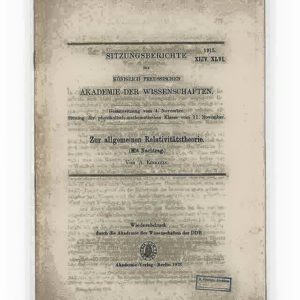- T. Katz
- Aug 7, 2019
- 2 min read
The Organic Infinite Positive Feedback Circuit Loop, Version 63
Mercury’s Orbit + The Original 4 Papers of the Theory of Relativity with “On this date”
Mercury, discovered by Einstein, in figuring out the mathematics for the Theory of Relativity
The Story of The Theory of Relativity
“Einstein began to look at a mystery that had puzzled Astronomers for generations. According to Isaac Newton, the planet Mercury should be around the sun like this, but it was known for quite a while that the orbit of Mercury deviates from Newton’s Laws of Motion. It tilts a little bit, so the orbit instead of going like this begins to tilt, and it begins to make a pattern, like the petals of a flower.”
Einstein History (minute 55)
https://www.youtube.com/watch?v=rDP9Kr-wNI8
November 25, 1915
On this date in 1915, Einstein submitted the fourth of his four papers on general relativity. #ThanksEinstein
November 18, 1915
On this date in 1915, Einstein submitted the third of his four papers on general relativity. #ThanksEinstein
November 11, 1915
On this date in 1915, Einstein submitted the second of his four papers on general relativity. This paper is an addendum to his very first paper on general relativity, which was published on November 4, 1915. #ThanksEinstein
November 4, 1915
On this date in 1915, Einstein submitted the first of his four papers that together created his famed theory of general relativity. 100 years later, we celebrate Einstein for the indelible mark he made in physics and science at large. #ThanksEinstein
Mercury’s Orbit in the proving of The Theory of Relativity returns during Mercury Retrograde
AAAAAAAAAAA. Mercury’s Orbit in Einstein’s Theory of Relativity returns in 26 days
Einstein’s general relativity reveals new quirk of Mercury’s orbit
On this day in 1915, #Albert_Einstein presented calculations that explained Mercury’s odd orbit using his general theory of relativity —
In the middle of the 19th century, astronomers discovered that the orbit of Mercury doesn’t quite conform to the path predicted by Newtonian gravity. On each trip around the sun, Mercury’s closest approach, or perihelion, shifts forward by a slight amount, less than 2 degrees of arc per century (as seen from Earth). Most of that shift could be explained by the gravitational effects exerted by other planets in the solar system. But 43 seconds of arc remained unexplained. For decades, astronomers sought a solution by searching for a postulated planet, called Vulcan, nearer to the sun than Mercury. Gravity from such a planet could explain the deviation in Mercury’s orbit. But such a planet was never found.
In November 1915, Einstein used his new theory of gravity to calculate Mercury’s orbit and found that it explained the discrepancy precisely, a key argument for convincing other physicists that his theory was correct.














Comments